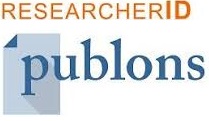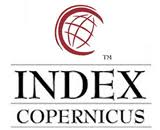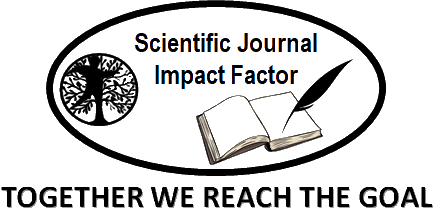Evaluation Prospective De L'impact Environnemental De La Production Cuprifère De La Gécamines Sur L’exposition De La Population A La Radioactivité Des Scories Sur Les Zones Avoisinantes
Abstract
This study assesses the prospective environmental impact of mining activities carried out by Gécamines (GCM-UL), with a particular focus on the risks associated with the radioactivity of slag resulting from copper production. Slag, a solid residue generated in large quantities, sometimes contains naturally occurring radioactive elements, raising concerns about its accumulation near inhabited areas and the potential consequences for human health and the environment.
The main objective of the research is twofold: firstly, to analyse the environmental effects of copper production; and secondly, to propose adaptation and mitigation measures. The study adopts both a quantitative and qualitative approach, through a descriptive, cross-sectional, and analytical methodology. It aims to anticipate the medium- and long-term impacts on surrounding areas.
The results reveal a strong local perception of the environmental effects of mining activities: 69.4% of respondents consider the impact to be significant (very strong, strong, or moderate). The “moderate” level, cited by 33.3%, suggests that while the negative effects are clearly perceived, they are not yet experienced as irreversible, but nonetheless remain a matter of concern. This perception reflects a growing awareness of environmental issues within local communities.
The study concludes that the radioactivity present in slag poses a serious health and environmental risk, especially in cases of prolonged exposure. Poor management of this waste could have lasting effects on public health and ecosystems. Therefore, it is crucial to strengthen environmental monitoring, adopt sustainable methods for managing mining residues, and make use of safer technologies. Finally, close collaboration between Gécamines and public authorities is essential for implementing strict environmental policies capable of protecting local populations and their environment in the long term.
Keywords
Full Text:
PDFReferences
R. Bouatay et al., « [Thyroglossal duct cysts in adult : clinical and therapeutic features] », Rev Med Liege, vol. 78, no 11, p. 649‑653, nov. 2023.
P. Matte et J. Hadoux, « [Drug approval: Cabozantinib monotherapy in advanced thyroid cancers refractory or not eligible for radioactive iodine treatment, after progression under previous systemic therapies] », Bull Cancer, vol. 109, no 11, p. 1103‑1104, nov. 2022, doi: 10.1016/j.bulcan.2022.08.008.
D. Le Garrec et al., « [Intermittent catheterization: What are the environmental impacts and how can they be reduced?] », Prog Urol, vol. 33, no 11, p. 533‑540, sept. 2023, doi: 10.1016/j.purol.2023.07.006.
C. D. Cao, A. Danais, P. Schwartz, et Y. Godbert, « [Not Available] », Bull Cancer, vol. 111, no 10S1, p. 10S31-10S41, oct. 2024, doi: 10.1016/S0007-4551(24)00406-5.
L. Gaspari, F. Paris, M.-O. Soyer-Gobillard, N. Kalfa, C. Sultan, et S. Hamamah, « [Environmental endocrine disruptors and fertility] », Gynecol Obstet Fertil Senol, vol. 50, no 5, p. 402‑408, mai 2022, doi: 10.1016/j.gofs.2021.09.009.
R. Bouatay et al., « [Thyroglossal duct cysts in adult : clinical and therapeutic features] », Rev Med Liege, vol. 78, no 11, p. 649‑653, nov. 2023.
S. Petignot, M. Trebillod, et P. Pétrossians, « [The treatments of hyperthyroidism] », Rev Med Liege, vol. 77, no 10, p. 616‑620, oct. 2022.
P. Matte et J. Hadoux, « [Drug approval: Cabozantinib monotherapy in advanced thyroid cancers refractory or not eligible for radioactive iodine treatment, after progression under previous systemic therapies] », Bull Cancer, vol. 109, no 11, p. 1103‑1104, nov. 2022, doi: 10.1016/j.bulcan.2022.08.008.
A. Sellem, W. Elajmi, R. B. Mhamed, N. Oueslati, H. Ouertani, et H. Hammami, « [Role and effectiveness of radioactive-iodine therapy for the treatment of Grave’s disease] », Pan Afr Med J, vol. 36, p. 341, 2020, doi: 10.11604/pamj.2020.36.341.21623.
N. E. Haraj, S. El Aziz, et A. Chadli, « [Anxiety and depression in patients treated for differentiated thyroid microcarcinoma] », Pan Afr Med J, vol. 35, p. 133, 2020, doi: 10.11604/pamj.2020.35.133.12877.
D. M. Hartl et al., « [De-escalation strategies in differentiated thyroid cancer] », Bull Cancer, vol. 108, no 12, p. 1132‑1144, déc. 2021, doi: 10.1016/j.bulcan.2021.07.008.
S. Bierlier et G. Scantamburlo, « [Environmental crisis and mental health] », Rev Med Liege, vol. 77, no 12, p. 733‑738, déc. 2022.
P.-N. Carron et T. Desmettre, « [Not Available] », Rev Med Suisse, vol. 20, no 883, p. 1387‑1388, août 2024, doi: 10.53738/REVMED.2024.20.883.1387.
L. Cabréra, A. Auguste, L. Michineau, J. Deloumeaux, C. Joachim, et D. Luce, « [Occupational and environmental risk factors for lung cancer in the French West Indies] », Med Sci (Paris), vol. 36 Hors série n° 1, p. 11‑15, oct. 2020, doi: 10.1051/medsci/2020175.
R. Garnier et al., « [Biomononitoring of environmental exposure to inorganic arsenic] », Ann Biol Clin (Paris), vol. 78, no 3, p. 279‑298, juin 2020, doi: 10.1684/abc.2020.1550.
N. E. Haraj, S. El Aziz, et A. Chadli, « [Anxiety and depression in patients treated for differentiated thyroid microcarcinoma] », Pan Afr Med J, vol. 35, p. 133, 2020, doi: 10.11604/pamj.2020.35.133.12877.
DOI: http://dx.doi.org/10.52155/ijpsat.v51.2.7355
Refbacks
- There are currently no refbacks.
Copyright (c) 2025 Teddy Mucail-a-Mucail

This work is licensed under a Creative Commons Attribution 4.0 International License.



















